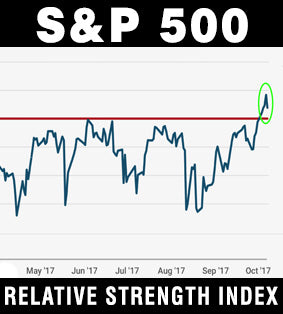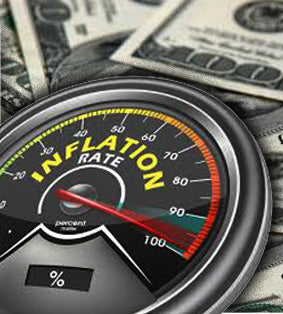The importance of holding gold to diversify investment portfolios is increasing as the stock market charts further into unprecedented territory.
As of late October, the Standard & Poor’s 500 Index had scored 175 all-time record highs, the second greatest string of record highs in market history after the bull rally of 1990-2000. The lack of volatility in the market has been particularly noteworthy, as the S&P 500 has not traded more than 3 percent below an all-time record high for 245 consecutive trading days, the longest run ever.
Some veteran market analysts argue the lack of volatility is a sign of investor complacency and warn stocks are overdue for a correction.
One measure raising concern is the Relative Strength Index (RSI) which indicates whether a stock or index is overbought or oversold. The Dow Jones Industrial Average RSI stands at a peak not seen in 62 years, while the S&P 500 RSI is at its highest point in a decade. The last few times that measurement was anywhere near today’s level spelled trouble for the markets, warned CNBC commentator Jim Cramer. “Over the last 20 years, the RSI on the S&P 500’s monthly chart has broken out above 70 just three times… one, the peak of the dot-com bubble in 1999 and 2000, then right before the financial crisis in 2007, and then the oil implosion in late 2014,” said Cramer.
Near-term concerns facing the stock market include the risk Congress disappoints Wall Street by failing to approve a cut in the corporate tax rate, and the chance that the Federal Reserve takes a more aggressive approach to tightening monetary policy through higher interest rates, a distinct possibility if President Donald Trump decides not to reappoint Janet Yellen as chair of the central bank.
Investment strategists at Bank of America-Merrill Lynch recently warned clients the S&P 500 could drop 10 percent by early February if corporate profits fail to meet expectations, while Morgan Stanley predicted a decline of 5 percent by year-end.
Gold, historically, has shown a strong inverse correlation to equities, particularly during times of substantial stock market declines.
Real Time Precious Metals Data Below








